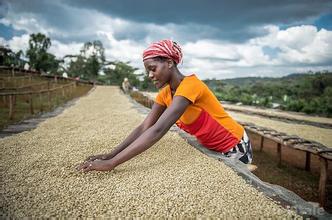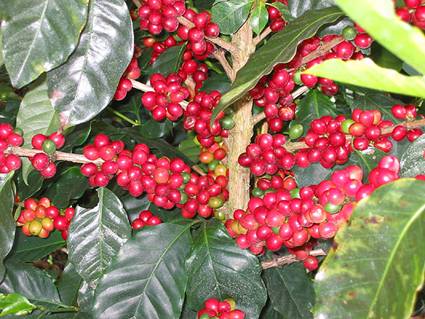How to select defective beans? What are the categories of defective beans? Recognize all kinds of common defective beans
All black beans / partial black beans:
The raw beans that were supposed to appear light turquoise turned black. Immature beans are over-fermented in the process of refining, resulting in microbial infection, mixed taste, sour smell, mildew smell, drug taste and so on, which may contain biotoxins.
Sour beans / local sour beans:
Raw beans show a yellow, yellowish-brown or reddish-brown appearance, usually accompanied by blackened germs, microbial invasion and infection during harvest or post-treatment, resulting in polluting fermentation, as long as one grain has an irritating sour and disgusting taste.
Mold destroys beans:
Raw beans show yellow, yellowish brown or reddish brown spots, sometimes there is powder on the spots, poor storage is the main cause, such as sporadic spores will infect other beans. The taste is mixed, fermented, musty, earthy, phenolic, etc. May contain biotoxins.
Moth-eaten beans:
Raw beans have worm-eaten holes, and more than 3 holes are listed as seriously worm-eaten. It is mainly affected by the invasion of Hypothenemus hampei (coffee borer) to stimulate the stink, turbid taste, mildew taste, irritating sour taste and so on, which may affect the appearance of ripe beans and contain biotoxins.
Immature beans:
Wrapped in yellow-green pale silver skin and not easy to peel off, raw beans bend inside. Because of immaturity, the ingredients in the beans are insufficient and mostly astringent, with the taste of rice stalk or grass green, which will seriously damage the taste. Affect the appearance of cooked beans.
Wilted beans: (the editor can't find the picture! Take a look at it for yourselves.
The appearance of raw beans is wrinkled like shrinkage. It is caused by malnutrition, so it does not produce the taste of good coffee, showing the taste of hay affects the appearance of cooked beans. Show a pale appearance, put in the water will float. Caused by excessive dryness during processing. Sometimes the taste of fermentation, mildew, soil and other taste or peculiar smell is not strong, but it will affect the taste of coffee.
With shell beans: (editor can't find the picture!)
Improper shelling, coffee bean outer layer of sheep skin (parchment) has not been removed, usually can be sifted out.
Shell beans:
Shaped like a shell, caused by genetic variation. The shape is thin, and it is easy to carbonize and produce scorched smell when baking. Too much carbonized ingredients can have adverse effects on health.
Broken beans:
Damage to the refining process, such as shelling, washing, etc., sometimes the damaged edges will turn black. It has the taste of fermentation, mildew, soil and so on, and it is also easy to carbonize and produce scorched taste when baking. Affect the appearance of cooked beans, too much carbonized ingredients will have an adverse effect on health.
Other foreign bodies: non-coffee impurities, including branches, stones, copper plates, etc. Produce all kinds of odors.
Unfortunately, based on cost considerations, not all coffee makers will seriously screen defective beans, but only use processing skills and selling techniques to make them disappear from the world, so, if we want to bake beans by ourselves, we'd better add another process, that is, to select the defective beans in the raw beans! I hope this will help you!
Source: country of coffee
Important Notice :
前街咖啡 FrontStreet Coffee has moved to new addredd:
FrontStreet Coffee Address: 315,Donghua East Road,GuangZhou
Tel:020 38364473
- Prev

World Fine Coffee Beans: Ethiopia Yejia Shefei G1 Gedeb Green Beans Description
Ye Jia Xue Fei believes that friends who are slightly interested in coffee will not be unfamiliar with it! This southwestern Ethiopian town is known worldwide for its unique floral and citrus flavor of coffee, and of course in China, her poetic name has added some attention to her. What a beautiful name! As the name suggests, a cup of good yega-shefi is indeed as good as grass Feifei
- Next

World Fine Coffee beans: a detailed introduction of rare Coffee beans
Coffee name: Napoleon Origin: British St. Helena (Saint Helena Island, the claustrophobic island where the hero Napoleon was exiled) Farm: Napoleon Farm Variety: Bourbon Coffee name: blue Elise (Elise Blue) Origin: French New Caledonia (New Caledonia Island) Farm: Caf Kua
Related
- Guji coffee producing area of Guji, Ethiopia: Humbela, Shakiso, Wulaga
- What is the most expensive variety of Qiloso in BOP multi-variety group?
- How to store the coffee beans bought home?
- Why are Yemeni coffee beans so rare now?
- Ethiopian Sidamo all Red Fruit Sun Sun Santa Vini Coffee beans
- SOE is mostly sour? What does it mean? Is it a single bean? what's the difference between it and Italian blending?
- Is Italian coffee beans suitable for making hand-brewed coffee?
- How to choose coffee beans when making cold coffee? What kind of coffee beans are suitable for making cold coffee?
- Just entered the pit to make coffee, what kind of coffee beans should be chosen?
- Can only Japan buy real Blue Mountain Coffee? What are authentic Jamaican Blue Mountain coffee beans?

